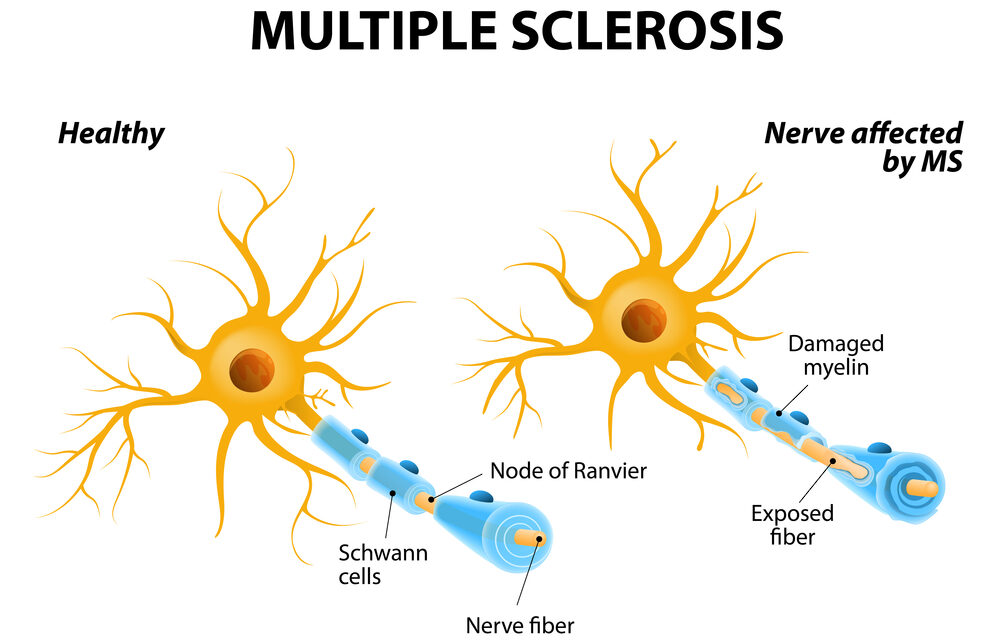By Annette Pinder
Multiple sclerosis (MS) is a chronic illness that affects the central nervous system, with the body’s immune system attacking the protective layer around nerve fibers, known as myelin. When this occurs, it causes inflammation, scar tissue, or lesions, making it difficult for the brain to send signals to the rest of the body.
The National MS Society (NMSS) estimates that nearly 1 million people in the U.S. and 2.3 million globally currently live with MS. About 200 new cases are diagnosed weekly in the U.S. The disease is also two to three times more common in women than men. While MS is not an inherited disorder, about 15% of people with MS have one or more family members or relatives with the disease. There is also a 1 in 3 chance for twin siblings to have MS. The incidence of MS is higher in colder climates. People of Northern European descent have the highest risk of developing MS, and the lowest risk is among Native Americans, Africans, and Asians.
MS has a wide range of symptoms and levels of severity, ranging widely from person to person. Common symptoms are fatigue, difficulty walking due to numbness in the legs or feet, difficulty balancing, muscle weakness and spasticity, and vision difficulties. Other common symptoms include acute or chronic pain, tremor, and difficulty with concentration, memory, and word-finding. MS symptoms can happen all at once, or be so mild that patients disregard them. Early symptoms include:
- Numbness and tingling that affects the arms, legs, or one side of your face, similar to the pins-and-needles when your arm or foot fall asleep.
- Uneven balance and weak legs that may cause tripping while walking or engaging in another type of physical activity.
- Double vision, blurry vision in one eye, partial vision loss, or eye pain.
It is important to see a neurologist if you are experiencing any of the above symptoms. Your neurologist will perform a neurological exam, request a clinical history, and order various tests to determine the presence of active and inactive lesions throughout your brain and spinal cord; thinning of your optic nerve; abnormalities in your spinal fluid; assess the electrical activity in your brain; and rule out infectious diseases or other conditions such as Lyme disease, lupus, and Sjögren’s syndrome, which have similar symptoms.
Researchers and neurologists cannot say yet what causes MS. However, the ultimate result is damage to myelin, nerve fibers, and neurons in the brain and spinal cord, which make up the central nervous system. Experts suspect that a combination of genetic and environmental factors is at play.
While there is no cure yet for MS, disease-modifying therapies have shown promising results in slowing the progression of the disease and reducing the frequency of relapses. More good news is that MS generally does not affect pregnancy. In fact, women with MS often experience relief from symptoms during pregnancy.
Learn more about MS at www.ninds.nih.gov and www.nationalmssociety.org.












